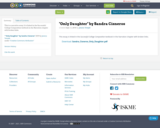
This is a narrative essay. It is linked in the Successful College Composition textbook in the Narration chapter with broken links.
- Subject:
- Arts and Humanities
- Literature
- Material Type:
- Reading
- Date Added:
- 09/05/2019

This is a narrative essay. It is linked in the Successful College Composition textbook in the Narration chapter with broken links.
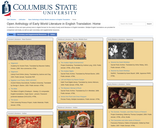
A collection of free and open primary texts in digital formats for the study of early world literature in English translation. Multiple English translations are provided for comparison and study, as well as open secondary and supplemental resources.

Created as part of the Creative Commons Licensing Certificate, this video provides an introduction to Open Educational Resources, Open Access, and Creative Commons licensing for faculty who may be interested in publishing or using open resources.
CC BY 4.0
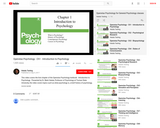
Openstax Psychology for General Psychology classes. Presented by Dr. Mark Hatala, Professor of Psychology at Truman State University, these videos cover topics from the Openstax textbook for Psychology chapter by chapter.
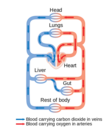
Revised for Bio 101, Human Circulatory System, Errors in MC questions fixed.By the end of this section, you will be able to:Describe an open and closed circulatory systemDescribe interstitial fluid and hemolymphCompare and contrast the organization and evolution of the vertebrate circulatory system.
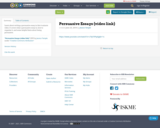
Learn about writing a persuasive essay in this 6-minute video. It covers what a persuasive essay is, how to organize it, and some helpful hints about being persuasive.
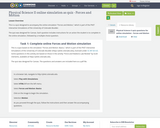
This is a quiz designed to accompany the online simulation "Forces and Motion," which is part of the PhET Interactive Simulations of the University of Colorado Boulder.The quiz was designed for Canvas. Each question includes instructions for an action the student is to complete in the online simulation, followed by a multiple choice question.

This is a quiz designed to accompany the online simulation "Collision Lab," which is part of the PhET Interactive Simulations of the University of Colorado Boulder. The quiz was designed for Canvas. Each question includes instructions for an action the student is to complete in the online simulation, followed by a multiple choice question.
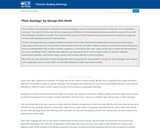
The scientific community must be effective in communicating the results of its work to the public in a way that can be understood and used. The need for this is acute, for the complexity and difficulty of environmental and resource problems require full use of all the knowledge scientists can muster. The wisdom of the actions of both the government and private sectors depends in large part on their understanding of resource characteristics.
The U.S. Geological Survey is uniquely qualified to provide much of the required knowledge about natural resources through its many reports and maps and can be proud of the products of its work. Too often, however, reports are couched in words and phrases that are understandable only to other scientists, engineers, or technicians. But, who, really, are the ones to whom the Survey wishes to convey its findings? Other scientists and engineers, yes. But beyond them, by far a larger audience: teachers, students, businessmen, planners, and Federal, State, county, and municipal officials–in short, the public.
More than 50 years ago former Director George Otis Smith recognized the same problem. His plea for “Plain Geology” was a classic, just as applicable now as it was in 1921. It is herewith reprinted to make it generally available.
persuasion example
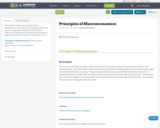
The objective of this course is to provide an introduction to the study of the economic system from a macro or aggregate perspective. We will do an analysis of unemployment, inflation and the impact of government policies on the level of economic activity.
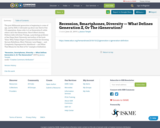
The post-Millennial generation is beginning to come of age, and by 2020, it will make up about one-third of the U.S. population. Some refer to it as Generation Z, while others call it the iGeneration. Here & Now's Jeremy Hobson talks with Jean Twenge, a psychology professor at San Diego State University and author of the book "iGen: Why Today's Super-Connected Kids Are Growing Up Less Rebellious, More Tolerant, Less Happy — and Completely Unprepared for Adulthood — and What That Means for the Rest of Us."
example of definition
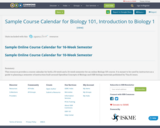
This resource provides a course calendar for both a 10-week and a 16-week semester for an online Biology 101 course. It is meant to be used by instructors as a guide to planning a semester of instruction built around OpenStax Concepts of Biology and OER biology materials published by Tina B. Jones.

We think we know what trees are, but even at the level of genetics, it's difficult to find what separates them from other plants.
Professional definition example

Ever wonder why people don’t do everything for themselves? In this video, Professor Art Carden of Samford University explains how specialization and trade create wealth and make us all better off.
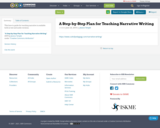
This how-to guide for teaching narrative is available both in text and audio versions.
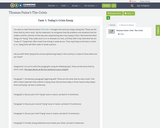

Summary
U.S. History is designed to meet the scope and sequence requirements of most introductory courses. The text provides a balanced approach to U.S. history, considering the people, events, and ideas that have shaped the United States from both the top down (politics, economics, diplomacy) and bottom up (eyewitness accounts, lived experience). U.S. History covers key forces that form the American experience, with particular attention to issues of race, class, and gender.
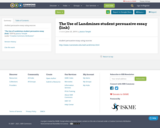
student persuasive essay using sources

Using the Google Arts and Culture hub, students will visit a Museum of their choice located all around the globe.The student will then find an artwork that speaks to them and write an analictical review using a five step process in assessing artwork. This process is at the core of developing a basic understanding of Art and its relation to every Culture and its connection history.Description: Explaining a work of art from an objective point of view, its physical attributes, and formal construction.Analysis: A detailed look at a work of art that combines physical attributes with subjective statements based on the viewer’s reaction to the work.Context: Any historical, religious, or environmental information that surrounds a particular work of art and which helps to understand the work’s meaning.Meaning: A statement of the work’s content. A message or narrative expressed by the subject matter.Judgment: A critical point of view about a work of art concerning its aesthetic or cultural value.Using critical thinking skills, technology and creative inquiry are a few of the important skills developed in this assignment.
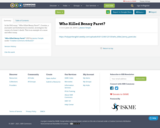
In his 1962 essay “ Who Killed Benny Paret?”, Cousins, a journalist and biobehavioral scientist, investigates the causes of a boxer’s death. This is an example of a cause and effect essay.